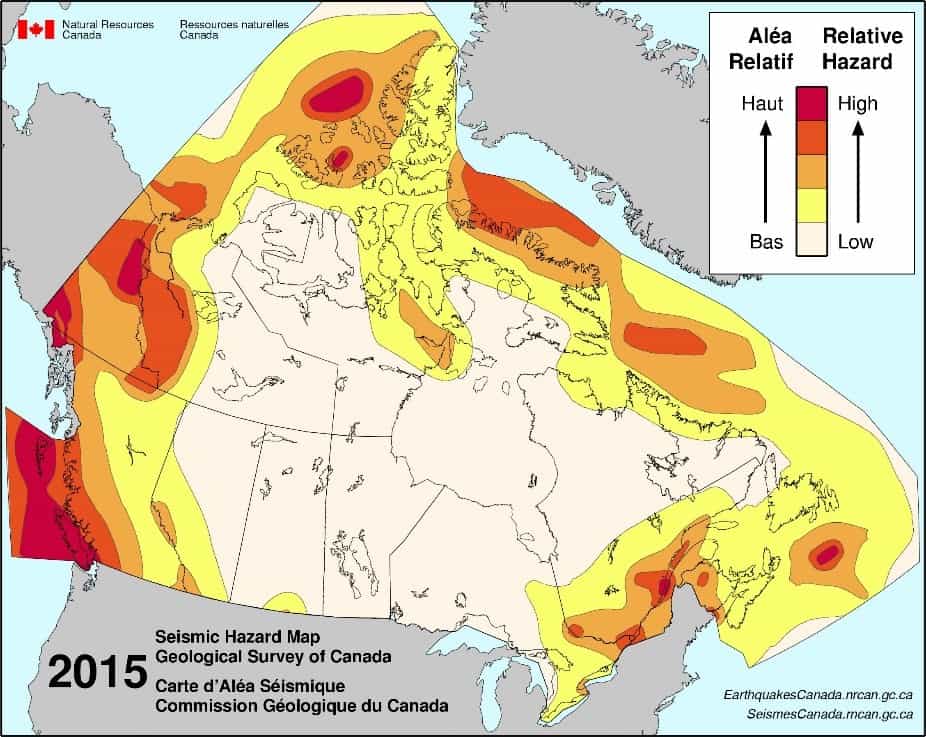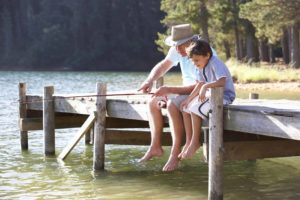An Instructional Guide to Getting Ready for the Unexpected
The Fort McMurray wildfires, which began on May 1st, 2016, engulfed more than 568,000 hectares of land and displaced more than 80,000 people. This natural disaster, like all natural disasters, highlight the importance of preparedness in the face of the unexpected.
Some disasters give a small amount of warning, others give none. Like the Halifax Explosion of 1917 that killed nearly 2,000 people. When it comes time to leave an area in an emergency, there is no time to think. There is no time to ponder. There is no time to plan. There is only time to act.
Having a comprehensive plan in place will mean you don’t have to think or plan. You and your family will be calmer, more collected and better able to handle the stresses that come along with the unexpected.
Use this guide as a starting point to getting you and your family prepared for an emergency situation.

Index
Alberta Fire Ban Map
Keep up to date on the latest fire bans in your area with this interactive map.
Understand the Disaster Risk in Your Region
Canada is a massive country, second only to Russia in terms of square kilometers. Spanning 9,984,670 sq. km, the country is home to many different types of environments and so many different types of disasters can occur. Knowing what risks are present in your region is the first step to becoming prepared, but depending on where you live, you will require different preparation for different events.
Wildfire Risk
As we’ve seen in the tragedy of Fort McMurray, as well as throughout Canadian history, wildfires are a common occurrence, and research has shown this trend is not about to slow down. Harvard University researchers from the John A. Paulson School of Engineering published a paper predicting that wildfires could become much more common by 2050.
The wildfire risk isn’t just growing in small areas, it is growing all across Canada. Natural Resources Canada just released a study outlining the increased danger that Saskatchewan now faces for fire risk. If you think your area might be at risk of wildfires, there are resources online to help.
The Government of Canada maintains a database of the most recent fires and the most dangerous fires currently raging. If you live in an area where the wildfire risk is high, this map will keep you up to date on the latest developments.
Earthquake Risk
The earthquake risk in Canada is most prevalent in British Columbia, but they have occurred in every province. Earthquakes Canada details the damage potential in various regions across the country and which regions are most susceptible to experience an earthquake.
Seismic Hazard Map

If you live on the west coast, having a robust earthquake plan is a realistic goal. The Government of British Columbia is greatly enough concerned about an earthquake of 9.0 magnitude occurring in the next 50 years, and have spent $1.2 million on tsunami disaster drills¹. It’s not a scare tactic, but a testament to the serious need for preparation before these types of events happen. You can take a step in the right direction by getting familiar with the Earthquakes Canada website and warning system.
Flood Risk
If you live on the plains, flooding is a very real danger. There have been a few times in Canadian history that floods have forced the evacuation of tens of thousands of people. The worst floods in Canada’s history occurred in the prairie provinces of Manitoba and Calgary, but they have also occurred in other provinces such as Ontario.
You can visit the Canadian Government’s Flood Damage Reduction Program to learn more about the risks that flood pose in your province.
Staying Up To Date on the Risks
No matter which emergency situation, there are resources present that can help you stay up-to-date and aware of what’s happening in your area. Weather warnings are your first and best defense. Listen to weather warnings. They can mean the difference between acting on time and too late.
Two resources are invaluable when emergencies happen: The Weather Network Alert System, and the Public Weather Alerts for Canada. Use these sites to their full potential to keep aware.
If you think there may be other types of disaster risks in your area, the Government of Canada has an interactive section of their site that outlines the various natural hazards that may be in your part of the country.
Disaster Preparation
Now that you understand the types of risks in your area, it’s time to talk prep. Do you know the items that you’ll need to have with you at a moment’s notice? Do you have a plan for you and your family to evacuate if necessary? What if you’re at work? Do you have a meeting spot?
Have an Exit Strategy
An exit strategy can detail how you’ll leave your home, how you’ll leave your neighborhood and how you’ll leave the town/city you live in. The more detailed, the more comfortable you’ll be if the time comes to execute that plan.
Make a plan on the best way to exit your home and neighborhood if needed. Canada’s Get Prepared website has an interactive Emergency Plan Kit that provides you with a detailed PDF/print out of all the relevant information you might need during an emergency. You can input your own home exit plan, custom emergency contact information, family phone numbers and even detailed plans for household pets.
 If you prefer to make your own list, use a few of these points to start:
If you prefer to make your own list, use a few of these points to start:
- Determine house escape routes and designate a meeting spot.
- If children are at school, determine who will pick them up.
- Determine your final destination if you need to leave for an extended period.
- Document any special medical/health needs.
- Have a plan in place for pets.
- Have emergency contact numbers, especially with individuals who live outside of the potential emergency area.
Be prepared to change your written travel route. Natural disasters may cut off normal routes, and government officials may require
evacuees take a specific route. Always pay attention to evacuation orders. Taking short cuts may place you in a dangerous spot.
What to Do in Specific Emergencies
Knowing what to do during a major event can save lives. Teach your family what to do when specific events happen so they can stay prepared and stay safe. Implement each potential emergency into your plan, so you’ll know exactly what to do in any situation. These are just a few of the more likely scenarios but is not an exhaustive list.
What to do in an Earthquake
If Inside:
- Stay inside.
- Get underneath heavy furniture (beds, desks, etc.).
- Cover your head and torso to protect yourself from falling objects.
- Hold on to the object to keep it covering you. Be ready to move with the object if the shaking is strong enough.
- Stay away from windows, shelves and unsecured heavy objects.
If Outside:
- Stay outside.
- Get away from buildings. Get to an open area.
- If in a crowd, get to an area you won’t be trampled.
If in a Vehicle:
- Pull over to a safe area not blocking the road.
- Stay away from any bridges, overpasses, underpasses or buildings.
- Listen to the radio for instructions.
- Look for downed power lines. Don’t exit the car if there are any.
- If you have a HELP sign, put it in your window.
- Wait for emergency vehicles to assist.
What to do in a Wildfire:
- Listen to local radio and watch local television.
- Be ready to heed evacuation orders at any time.
- Close all doors and windows.
- Turn on lights to help with visibility.
- Use sprinklers to wet your roof and other valuables.
- Remove flammable drapes, curtains or other window coverings.
What to do in a Flood:
- Get to higher ground and avoid areas that prone to flooding.
- If water rises in your home, use upper floors, the attic or your roof to stay safe.
- Listen to the radio for instructions from authorities.
- Do not walk across streams or drive through floods.
- Turn utilities off if advised to do so.
- If you come into contact with flood waters, wash your hands with soap in clean water.
Have an Emergency Kit
Some people call it an emergency kit, some call it a bug-out bag, but whatever its name, be sure you have one handy. There will
likely be specific needs that you or your family require in your kit, so think of these items as a guideline rather than a hard and fast rule. Most will tell you to think about survival for at least 72 hours.
Essential Items
- First aid kit.
- Cash, traveler’s cheques and change.
- Family documents (birth certificate, passports).
- Manual can opener.
- Food that will keep (canned, dried meat, etc.)
- Water (enough for two liters per person per day).
- Flashlight.
- Radio.
- Extra keys.
- Special health/medical items (prescriptions, etc.)
- Written copy of your emergency plan.
Additional Items
- Change of clothing
- Hygiene items
- Tools (knife, wrench, hammer, etc.)
- Duct tape
- Whistle
- Sanitizer
- Toilet paper
- Scissors
- Plastic sheeting
- Pre-paid phone card
- Pet foods and supplies
- Utensils, plates and cups
- Infant supplies
- Vehicle Items
- Blankets
- Road maps
- Road flares
- Tire chains (if required in your area)
- Work gloves
- Tools (ratchet set)
- Extra oil and other car fluids
- Sand, salt or kitty litter
- Shovel/ice scraper
- Windshield washer fluid
- Jumper cables
- Battery pack
Spend some time thinking about your family’s needs and add to this kit over time. Keep it in an accessible area, so if a disaster hits, you won’t be looking for it.
Have a Plan. Stay Safe.
No single plan is going to cover all of one family’s needs. Each emergency preparedness plan will need to be customized to fit each individual. Take some time now to
prepare you and your family for the events that may occur in the future, and you’ll be better equipped to handle anything that comes along.

